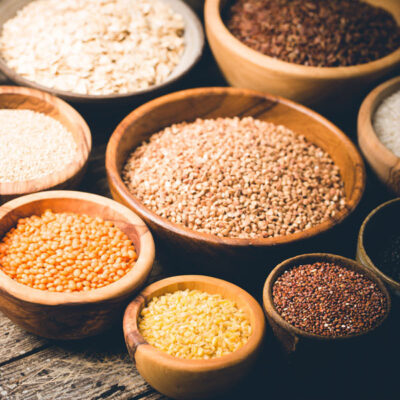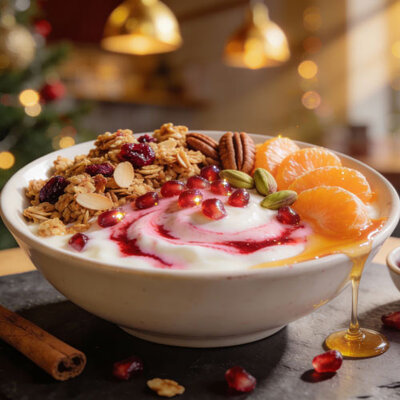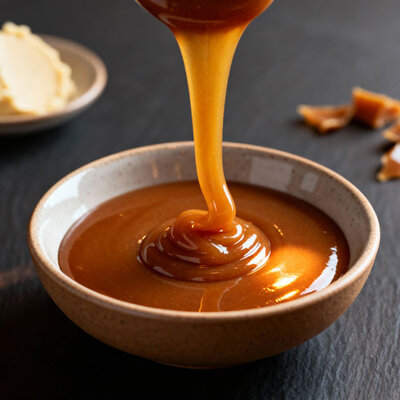Baking With Wholemeal Flour
Author: Admin Date Posted:21 November 2024

Wholemeal flour for healthier bakes Whatever your baking needs, wholemeal flour can elevate your baking while contributing to a balanced diet.
Wholemeal flour is a wholesome alternative to white flour, packed with nutrients and flavour. Whatever your baking needs, it can elevate your baking while contributing to a balanced diet. Let's discover how to make the most of this versatile ingredient!
What is Wholemeal Flour?
Wholemeal flour is made from the entire grain, including the bran, germ, and endosperm. This distinguishes it from white flour, which is refined and lacks the nutrient-rich components of the grain.
Celebrated for its higher nutritional content, it provides more fibre, vitamins, and minerals, making it a healthier choice for baking and cooking. The presence of bran and germ not only adds to its nutritional profile but also gives a nutty flavour and a denser texture to baked goods. Which can be both a blessing and a curse.
Other types of flour are made with the whole grain, such as rye, spelt or barley, but more often than not when you come across the term 'wholemeal' you can take it to mean wheat.
Is Wholemeal Flour Healthier Than White Flour?
Yes, wholemeal flour is generally considered healthier than white flour.
The key difference lies in the milling process. While wholemeal flour retains all parts of the grain, white flour undergoes refining which strips away the bran and germ, leading to a loss of essential nutrients.
It is rich in dietary fibre, which supports digestive health and can help maintain a feeling of fullness, potentially aiding in weight management. Additionally, it contains higher levels of vitamins and minerals, such as B vitamins, iron, and magnesium.
This nutrient density not only contributes to better overall health but also helps in managing blood sugar levels, making it a preferable choice for those looking to enhance their dietary options.
What is the Difference Between Brown Flour and Wholemeal Flour?
Brown flour and wholemeal flour are often confused because they both have a darker colour compared to white flour, but they do have distinct differences.
Brown flour is typically made from a mixture of whole, unrefined flour and refined white flour, which means it still retains some of the bran and germ but not as much as wholemeal flour. This results in lower fibre and nutrient content compared to true wholemeal flour. On the other hand, as we have seen, wholemeal flour offers a richer source of fibre and nutrients.
So, while brown flour can be a healthier option than white flour, wholemeal flour generally provides the most comprehensive health benefits.
Should I Buy Organic Stoneground Flour?
Deciding whether to buy organic stoneground flour can depend on a few factors, including your health priorities and culinary preferences. Organic stoneground flour is made from grains that are grown without synthetic pesticides or fertilisers, which can be a significant advantage for those seeking to reduce their exposure to chemicals. The stone grinding process preserves more of the wheat's natural oils and nutrients compared to conventional milling methods, resulting in a flour that is both flavourful and nutrient-dense.
Read our article on the benefits of organic flour over conventional flour
Additionally, many people appreciate the taste and texture of stoneground flour, which can enhance the quality of baked goods. If you're looking for a healthier, more flavorful option that supports organic farming practices, then investing in organic stoneground flour could be a worthwhile choice for your kitchen. Just remember to check for reputable brands to ensure you're getting the best quality product!
Types of Wholemeal Flour
There are several varieties to choose from, each offering its own unique characteristics. Here are some of the most common types:
- Whole Wheat Flour - Made from the entire wheat kernel, this type is the most popular and is perfect for a variety of baking needs.
- Spelt Flour - Derived from spelt wheat, this flour has a slightly nuttier taste and is often easier to digest, making it a great choice for those with mild wheat sensitivities.
- Rye Flour - Known for its dense texture and rich flavour, rye flour is commonly used in traditional breads, particularly in Eastern European baking.
- Barley Flour - This flour is made from finely ground barley and is often used to add a unique taste and increased nutritional profile to baked goods.
- Oat Flour - Ground from whole oats, this gluten-free option is popular among those with gluten intolerances and adds a pleasant sweetness to recipes.
For the rest of the article, we will be referring mainly to the use of wholemeal wheat flour, although you can experiment with substituting for other flours in your healthy baking. Just remember that they all have different properties and will behave very differently.
What is Wholemeal Flour Used For?
Wholemeal flour is incredibly versatile and can be used in a variety of recipes, making it a staple in many kitchens. It not only enhances the taste of your dishes but also boosts their nutritional value, making it an excellent choice for healthier baking.
It’s commonly used for baking bread, as it adds a hearty texture and a rich, nutty flavour. You can also use it to make pancakes, muffins, cookies, and even pizzas. Additionally, it’s great for thickening sauces or gravies due to its natural fibre content.
When substituting white flour, keep in mind that it may require a little more liquid and a longer mixing time to reach the desired consistency.
Using wholemeal flour in your baking and cooking is a great way to increase the fibre in your food, but it has different results to white flour so you need to plan substitutions wisely.
Adjusting Recipes for Wholemeal Flour
Goods baked with wholemeal flour can be notoriously dry and dense, not at all like the crisp light creations you are used to with white flour. For that reason baking with wholemeal has a really bad rep.
The trick is to substitute gradually, using just a small percentage of wholemeal flour to white and getting used to the new way it behaves. Some goods can take it better than others, but unfortunately, it is a bit of a personal learning curve to find out what works best for you.
Recommended substitutions and ratios
When it comes to substituting for white flour, it's essential to strike a balance that maintains the texture and taste of your baked goods.
A common recommendation is to start with a ratio of 25% wholemeal to 75% white flour for recipes like cakes and muffins. This way, you can enjoy the added nutritional benefits without compromising the lightness. As you gain confidence, you can gradually increase the wholemeal proportion to 50% or more, especially for denser recipes like bread and cookies.
Remember, the fibre absorbs more liquid so these adjustments may also require a slight increase in liquids to ensure your batter or dough remains moist. Ultimately, it’s all about experimenting to find the perfect ratios that suit your needs.
Importance of hydration and moisture adjustments
When baking with wholemeal flour, understanding the importance of hydration and moisture adjustments is key to achieving the best results.
Wholemeal flour contains more fibre compared to white flour, which means it absorbs more liquid.
This higher absorption can lead to drier baked goods if you don’t compensate with additional moisture. It's recommended to add a little extra liquid—such as water, milk, or eggs—when working with wholemeal flour, which can help maintain a desirable texture and prevent your results from becoming too dense or crumbly. Keeping an eye on the dough or batter consistency is essential; if it feels too dry, don’t hesitate to add a splash more liquid.
With some practice, you’ll find the right balance that enhances your bakes while providing the wholesome benefits of wholemeal flour.
Top Tips for Successful Baking with Wholemeal Flour
- Start Gradually: When transitioning to wholemeal flour, begin with a small percentage blended with white flour. This helps you adjust to the different baking characteristics while still achieving a familiar texture.
- Adjust for Moisture: Always increase the liquid in your recipes when using wholemeal flour. A good rule of thumb is to add an extra 1-2 tablespoons of liquid for every cup of wholemeal flour.
- Sift Flour: Sifting wholemeal flour before measuring can help aerate it, leading to lighter baked goods. It can also break up any clumps that may have formed. Just remember to put the bran back in once you have sifted it.
- Use Fresh Flour: Wholemeal flour is best used fresh. The oils in the bran can go rancid more quickly than in white flour, so store it in an airtight container and use it within a reasonable time.
- Experiment with Ingredients: Don't hesitate to incorporate other ingredients that enhance moisture and flavour, such as yogurt, or puréed fruits.
- Check Dough Consistency: Pay attention to your dough or batter; wholemeal flour can create a different texture. If it feels too dry, add a bit more liquid to achieve the right consistency.
- Don’t Rush Rising Time: Wholemeal flour can take longer to rise due to its denser nature. Be patient and allow your dough the time it needs to properly rise for the best results.
- Use a Kitchen Scale: Measuring your ingredients by weight rather than volume can lead to more consistent results, especially when working with wholemeal flour, which can vary in density.
Troubleshooting Common Issues
Certain things come up time and time again when baking with wholemeal flour. Here's what to look out for and how to fix them. Most of them have to do with the increased moisture retention properties of wholemeal flour, and the effect on the gluten structure.
Dense texture
When it comes to tackling the dense texture often found in baked goods made with wholemeal flour, there are several strategies you can employ.
First, consider increasing the hydration level of your recipe by adding a bit more liquid, as wholemeal flour absorbs moisture more readily than white flour.
You might also try incorporating ingredients like yogurt or applesauce, which not only enhance moisture but can also add a rich mouthfeel to your baked treats.
Lastly, when it comes to bread, give your dough sufficient time to rise, as wholemeal flour may require a longer period due to its denser structure.
Dryness or crumbly results
If you find that your wholemeal baked goods are turning out dry or crumbly, there are several effective methods to improve moisture retention.
One of the easiest adjustments is to increase the fat content in your recipe. Adding ingredients like oil, butter, or nut butter can enhance the overall texture and moisture of the final product. Additionally, incorporating fruits or vegetables, such as bananas, mashed sweet potatoes, or grated carrots, can help add natural moisture without compromising flavours.
It’s also beneficial to avoid overmixing your batter, as this can lead to a tougher texture.
Finally, consider wrapping your baked goods in foil or storing them in an airtight container once they cool, which can help maintain their moisture and prevent them from drying out too quickly.
Flavour considerations
When baking with wholemeal flour, it's essential to keep in mind that its nuttier and more robust flavour profile can significantly influence the taste of your finished product.
To balance this earthiness, you might want to enhance your recipes with complementary flavours. For instance, adding spices like cinnamon, nutmeg, or ginger can elevate the overall taste and provide warmth. Sweeteners such as honey or maple syrup not only contribute moisture but also bring a delightful sweetness that can counteract the wholemeal flour's depth.
Don't hesitate to experiment with enriching your mixture by incorporating ingredients like cocoa powder for a chocolatey treat or citrus zest for a refreshing zing. By thoughtfully blending flavours, you can create baked goods that are not only delicious but also showcase the unique characteristics of wholemeal flour!
As we have seen, baking with wholemeal flour does not mean sacrificing flavour and texture when approached with care and creativity. And it is perfectly possible to create baked goods that are both wholesome and satisfying. Remember to experiment with various ingredients and techniques to find the combinations that work best for you.
Whether you're making a delicious loaf of bread, moist muffins, or perfecting your pastry, embracing the qualities of wholemeal flour can open up new possibilities in your kitchen.
Try our organic stoneground wholemeal flour, or explore our full range of healthy baking ingredients.



